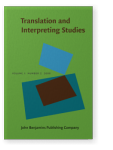Vol. 1:2 (2006) ► pp.3–41
Translating in a forked tongue: Interlinear glosses as a creative device in Japanese translations
An intriguing contrapuntal device available to Japanese translators and writers is small-font glosses known as rubi, marginalia juxtaposed alongside words or phrases to fulfil a multitude of functions. Moving far beyond their original role of a phonetic aid, rubi are often used bivocally to produce not only two unrelated pronunciations of a word but also an extra semantic layer, helping to transcend the limitations of conventional translational equivalents. Rubi glosses can enhance a word’s expressiveness, emphasize, exaggerate, elucidate or delimit its meaning, convey a different register or speech mode, or act as a paraphrase or inside joke. The double layering and shifting focus provided by different headword-rubi permutations enable translators to convey the meaning of source text concepts while retaining their foreignness, including a representation of the original sound (an aspect that is usually sacrificed when meaning is translated). Rubi can also have a subversive function, destabilizing the headword by qualifying or relativizing its meaning or acting as an intimate critique or commentary. Thus these in-text excurses often exist in a state of tension, an uneasy embrace, with the words to which they are attached. This article examines how rubi enable and exploit to good effect the elaborate interplay amongst different scripts, sound and meaning in Japanese translations, and suggests that some aspects of this double-voiced practice could be adapted by translators in other languages as an avenue for heteroglossic experimentation.
Cited by (1)
Cited by 1 other publications
This list is based on CrossRef data as of 10 july 2024. Please note that it may not be complete. Sources presented here have been supplied by the respective publishers. Any errors therein should be reported to them.
